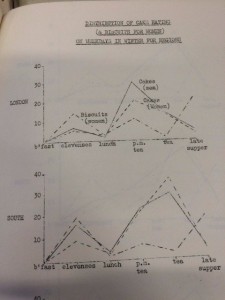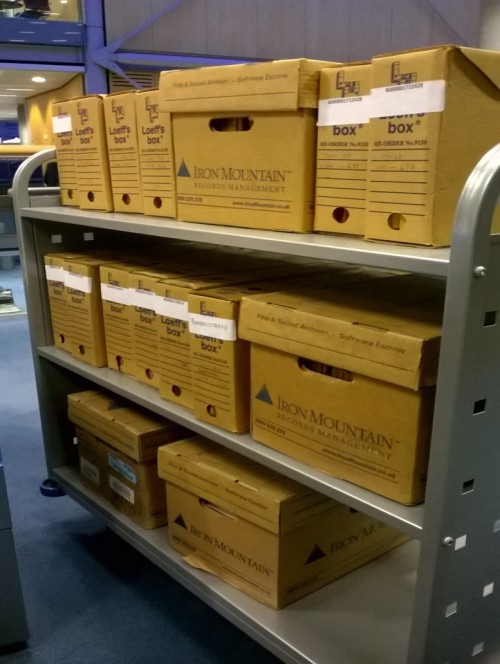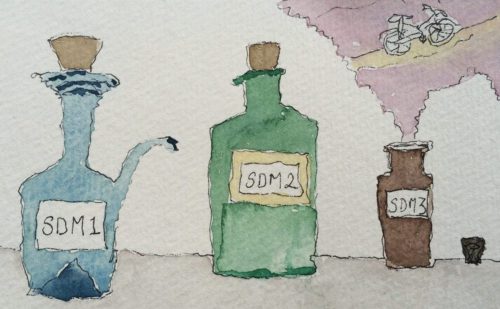
So here’s the way we do things in the archive world: You have your boxes of papers, all messy and disorganised. Then you try and impose some order on them, trying to make sense of how the records were originally created and maintained. After a well-earned tea break (of course, a safe distance away from the original, unique documents!), you start to organise them into neat and pretty categories and form a lovely tidy hierarchy, which supposedly reflects the structure and organisation of the creating body. Or that’s the theory anyway …
“It’s about the history, the memory of the organisation.” Juliet Scott
From the Archive

“Distribution of cake eating (& biscuits for women) on weekdays in winter for regions”

Since starting this project in October, I’ve been thinking about my role as archivist for the Tavistock Institute of Human Relations (TIHR). I’ve been considering what it means to open up a previously inaccessible archive collection, and the dynamics of bringing the collection out of the storage centre and into the light. I’ve also been thinking about what we mean when we talk about archives and institutional memory, and the role that an archive plays in organisational development and as a form of socio-cultural intervention …

